Aponogeton rigidifolius
Scientific name: Aponogeton rigidifolius
Family: Aponogetonaceae
Maximum size reached under cultivation: 30 - 60 cm (11.81 - 23.62 inch)
014
Recommended pH range: 6.5 - 7.4
Recommended water hardness: 4 - 18°dGH (71.43 - 321.43ppm)
0°C 32°F30°C 86°F
Recommended temperature range: 22 - 28 °C (71.6 - 82.4°F)
Preferred propagation method: Seeds
Native to: Sri Lanka
Growth rate: Slow
Recommended substrate: Fine gravel
Lighting requirements: Medium
Ideal placement in tank: Midground
🌿 Family
Aponogetonaceae
🏷️ Common Name
Rigid Leaf Aponogeton
🌍 Origin
Aponogeton rigidifolius is native to Sri Lanka, where it thrives in slow-moving or stagnant freshwater environments such as rivers, streams, and ponds. It naturally grows fully submerged in tropical waters, making it well-suited for aquariums. Due to its adaptability, it is a popular choice among aquascapers seeking a durable and elegant midground or background plant.
📈 Growing Conditions
This is a fully submersible aquatic species and does not tolerate emersed growth. It prefers medium lighting to maintain its unique rigid, elongated leaves. Unlike other Aponogeton species, Aponogeton rigidifolius does not enter a dormant phase under stable aquarium conditions.
For best results, plant it in a fine gravel substrate that allows proper root development. This plant reaches 30–60 cm (11.8–23.6 inches) in height, making it perfect for the midground or background of aquariums. It thrives in a pH range of 6.5–7.4, water hardness between 4–18 dGH, and temperature between 22–28 °C (71.6–82.4 °F).
💡 Lighting Requirements
Moderate lighting is recommended for optimal growth. 8–10 hours of light per day is ideal. While it tolerates low-light tanks, slower growth and thinner leaves may occur. Providing consistent lighting helps prevent algae and supports strong, healthy foliage.
📍 Planting Area
Aponogeton rigidifolius is best used in the midground or background of aquariums. Its tall, wavy leaves add vertical dimension and contrast to aquascapes. It pairs well with low-growing plants and hardscape features like rocks and driftwood, helping to create a layered, natural appearance.
🌱 Propagation
This species can propagate through both seeds and tubers. In aquariums, it may bloom and produce seeds that can be collected and germinated separately. Under ideal conditions, it may also form additional tubers, which can be divided and replanted to encourage vegetative growth.
⚙️ Difficulty
Easy to moderate. Aponogeton rigidifolius is ideal for hobbyists of all experience levels. While it does not require CO2 injection, supplemental CO2 and liquid fertilizers promote faster growth and deeper leaf coloration. Stable water conditions and regular feeding help maintain its structure and vibrancy.
📝 Short Description
Aponogeton rigidifolius, commonly known as the Rigid Leaf Aponogeton, is a unique aquatic plant with long, stiff, undulating leaves that lend movement and depth to aquascapes. It does not experience dormancy like some other Aponogetons, making it a reliable long-term addition. Its elegant form and slow, steady growth make it popular among aquarists looking for a low-maintenance but visually impactful species.
With proper lighting, a nutrient-rich substrate, and minimal interference, this plant will reward aquascapers with consistent performance and an eye-catching presence in any freshwater setup.

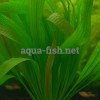 Aponogeton bovianus
Aponogeton bovianus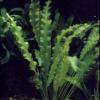 Aponogeton crispus
Aponogeton crispus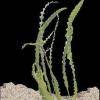 Aponogeton longiplumulosus
Aponogeton longiplumulosus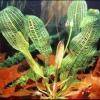 Aponogeton madagascariensis
Aponogeton madagascariensis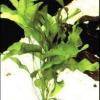 Aponogeton natans
Aponogeton natans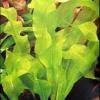 Aponogeton ulvaceus
Aponogeton ulvaceus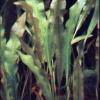 Aponogeton undulatus
Aponogeton undulatus